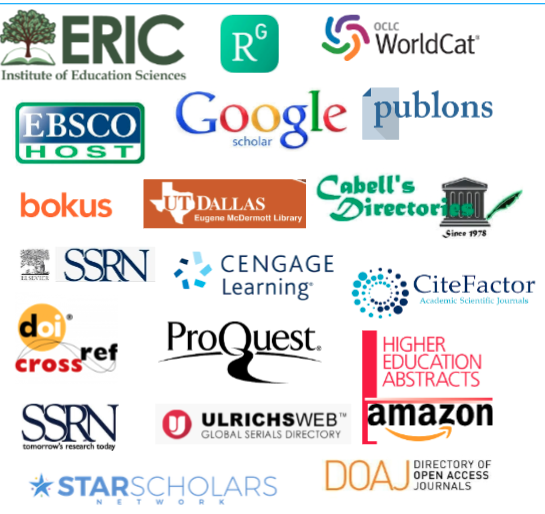How Interdisciplinarians Work
DOI:
https://doi.org/10.32674/jise.vi0.1452Keywords:
interdisciplinary studies, interdisciplinary methodology, complexityAbstract
Interdisciplinary research requires an approach different from research performed within a specific disciplinary framework. This paper reports on a study that was motivated by a perceived difference between how interdisciplinary research is done by scholars and how it is taught to students. A total of 21 semi-structured interviews were conducted with professional scholars who had presented at one of the Association for Interdisciplinary Studies recent annual conferences with the objective of exploring how professional scholars approach and perform interdisciplinary research. Three themes that arose from these interviews—1) the importance of an exploratory disposition, 2) a lack of concern for interdisciplinary boundaries, and 3) the importance of mentorship and community—have relevance in terms of how we design curriculum and educational experiences to prepare students to research complex, real-world problems that require an interdisciplinary approach.
Downloads
References
Abbott, W., & Nantz, K. A. (2012). Building students’ integrative thinking
capacities:
A case study in economics and history.” Issues in Integrative Studies, 30, 19–47.
Bammer, G. (2013). Disciplining interdisciplinarity: Integration and
implementation
sciences for researching complex real-world problems. Canberra: ANU E Press.
Bernard, H. R., (2012). Social research methods: Qualitative and quantitative
approaches. Thousand Oaks, CA: Sage Publications.
Forman, P. (2012). On the historical forms of knowledge production and curation:
Modernity entailed disciplinarity, postmodernity entails antidisciplinarity. Osiris, 27(1): 56–97. https://doi.org/10.1086/667823.
Frodeman, R. (2014). Sustainable knowledge: A theory of interdisciplinarity. New
York, NY: Palgrave Macmillan. https://www.amazon.com/Sustainable-Knowledge-Theory-Interdisciplinarity-Palgrave/dp/1137303018.
Hyde, L. (1998). Trickster makes this world: Mischief, myth, and art. Macmillan.
Mackey, J. L. (2001). Another approach to interdisciplinary studies. Issues in
Integrative Studies, 19(5): 59–70.
Mansilla, V. B. (2006). Assessing expert interdisciplinary work at the frontier: an
empirical exploration. Research Evaluation, 15(1): 17–29.
McMurtry, A. (2011). The complexities of interdisciplinarity: Integrating two
Different perspectives on interdisciplinary research and education. Complicity: An International Journal of Complexity and Education, 8(2). https://journals.library.ualberta.ca/complicity/index.php/complicity/article/view/8926. Retrieved Feb. 2019.
Montuori, A. (2005). Literature review as creative inquiry: Reframing scholarship
as a creative process. Journal of Transformative Education, 3(4): 374–93.
Montuori, A. (2012). Creative inquiry: Confronting the challenges of scholarship in
the 21st century. Futures, Special Issue: Futures Education, 44(1): 64–70.
Newell, W. H. (2001). A theory of interdisciplinary studies. Issues in Integrative
Studies, 19: 1–25.
Repko, A. (2006). Disciplining interdisciplinarity: The case for textbooks. Issues in
Integrative Studies, 24: 112-142.
https://our.oakland.edu/handle/10323/4488.
Repko, A., Szostak, R., & Buchberger, M. P. (2017). Introduction to
Interdisciplinary Studies. Second edition. Los Angeles, CA: Sage Publications, Inc.
Shandas, V., & Brown, S. E. (2016). An empirical assessment of
interdisciplinarity: Perspectives from graduate students and program
administrators. Innovative Higher Education, 41(5): 411–23.
https://doi.org/10.1007/s10755-016-9362-y.
Szostak, R. (2012). The interdisciplinary research process. Case Studies in
Interdisciplinary Research: 3-19.
Welch, J. (2018). The impact of newell’s ‘a theory of interdisciplinary studies’:
Reflection and analysis. Issues in Interdisciplinary Studies, 36: 193–211.
Welch, J. (2009). Interdisciplinarity and the history of western epistemology. Issues
in Interdisciplinary Studies, 35–69.
Woodill, S. (2016). Self as method: Strategic interdisciplinarity in teaching and
learning. Cutting Edge: An Interdisciplinary Studies Journal, Spring 2: 12-28.







